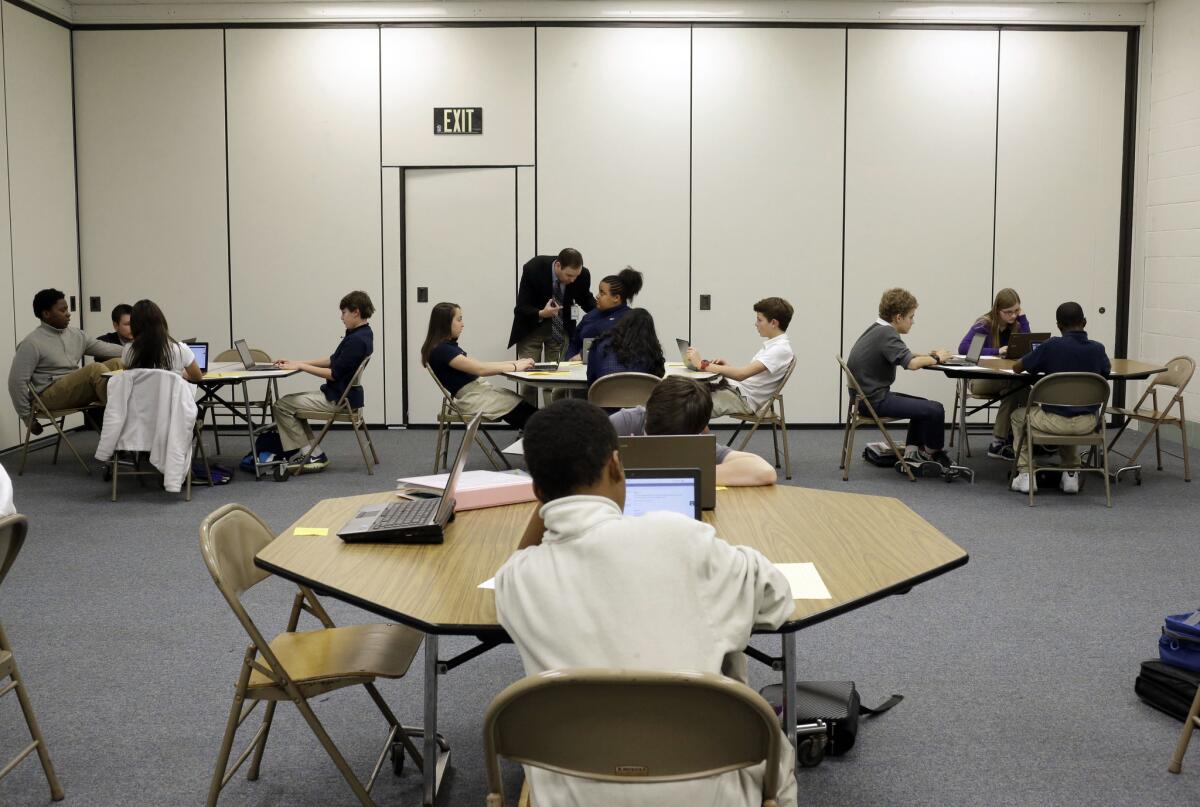Editorial: No Child Left Behind overhaul should keep states accountable

The No Child Left Behind Act, a product of good bipartisan intentions and bad legislative drafting, is closer than ever to a rewrite that was supposed to have happened eight years ago. Two senators who were carrying widely divergent bills to reauthorize the school accountability law have devised a compromise measure — and there’s a lot to like about it.
It’s way overdue. No Child Left Behind, a landmark achievement of the George W. Bush administration in 2001, created an elaborate system of educational metrics and standards — along with stiff punishments for schools that failed to meet them. But in the years since, the law has been widely criticized for being onerous and for setting standards that were impossible to achieve.
Under the compromise being pushed by Sens. Lamar Alexander (R-Tenn.) and Patty Murray (D-Wash.), billions of dollars in federal funding under Title I would continue to flow only to schools with high concentrations of low-income students, rather than “following the child” even if he or she transferred to a more affluent school, as some Republicans had proposed. Many in the GOP also wanted to eliminate the law’s annual testing requirements for students; this bill would keep the current testing schedule. The publication of schools’ annual test scores was one of the most useful parts of the law; among other things, it enabled the public to see the dismaying educational gap between disadvantaged students of color and their peers.
What Republicans would get out of the deal is a slimmed-down federal role in education and a welcome move away from the education law’s rigid, punitive approach.
In the future, states would set their own academic standards, though with some minimum requirements under the law. States also would create their own systems for measuring whether their schools were doing an adequate job, although the Education Department would have limited veto power over obviously inadequate plans. These new measurements would have to include test scores and graduation rates but could be expanded to more holistic models. And states would decide how to intervene when their schools fall short. The bill emphasizes helping schools improve rather than mandating punishments.
The U.S. Education Department would be prohibited from pressuring or requiring states to adopt particular curriculum standards or to link teachers’ performance ratings to their students’ test scores. These are obvious pokes at the Obama administration’s efforts to persuade states to adopt support of the Common Core curriculum standards and Education Secretary Arne Duncan’s push to punish states that would not follow his stance on teacher evaluations.
This rewrite of No Child Left Behind should help ease the fretful anxiety and teach-to-the-test mentality that have overtaken too many schools. That’s good. But the bill would allow so much flexibility that it’s unclear what would happen in states that don’t try hard to reduce achievement gaps. If no one intervenes when schools founder year after year, what recourse is there for families?
The final bill should lay out the states’ responsibilities more clearly. The education law needs an overhaul, but that should not be seen as permission to leave students behind.
Follow the Opinion section on Twitter @latimesopinion and Facebook
More to Read
A cure for the common opinion
Get thought-provoking perspectives with our weekly newsletter.
You may occasionally receive promotional content from the Los Angeles Times.






